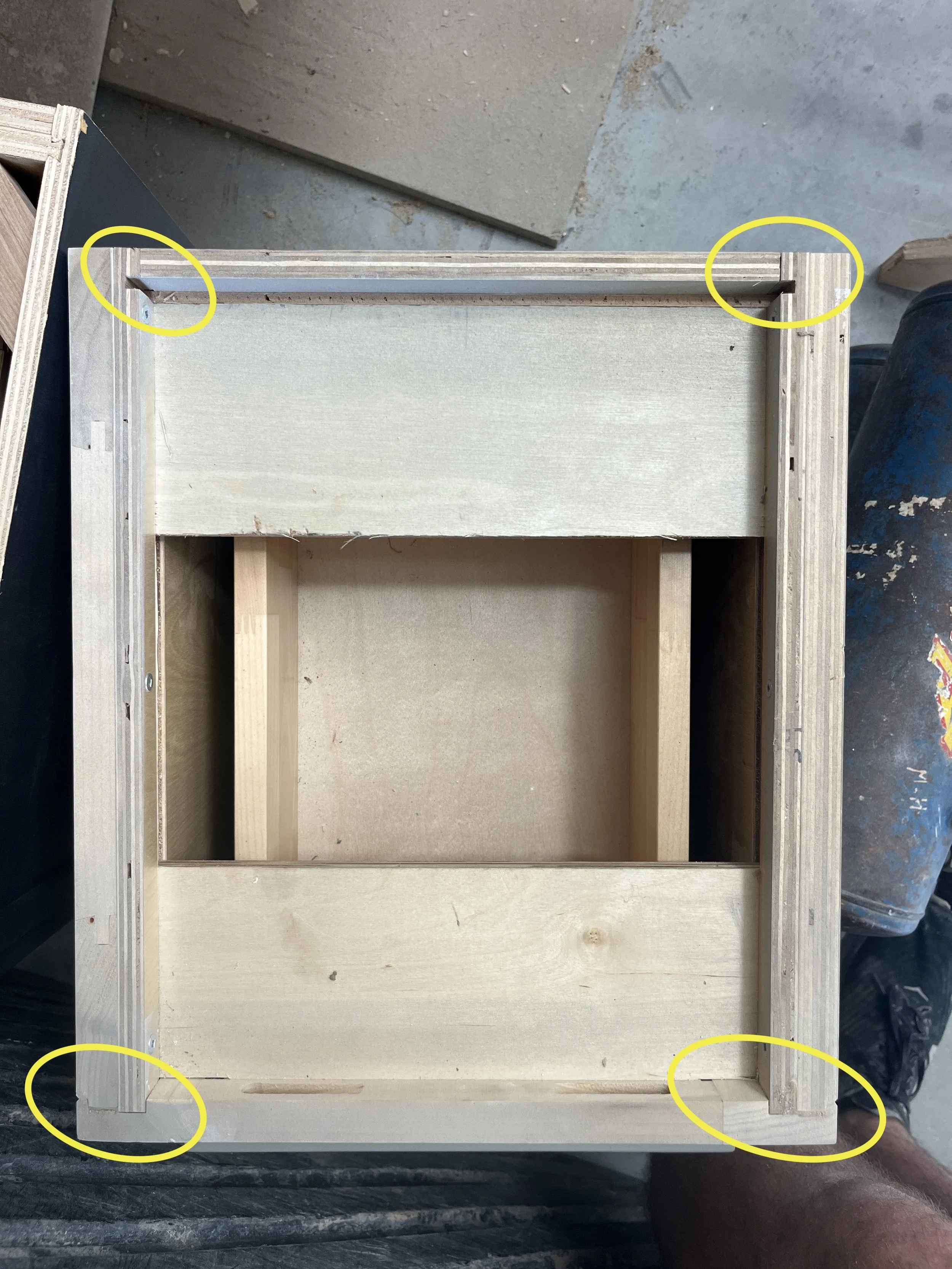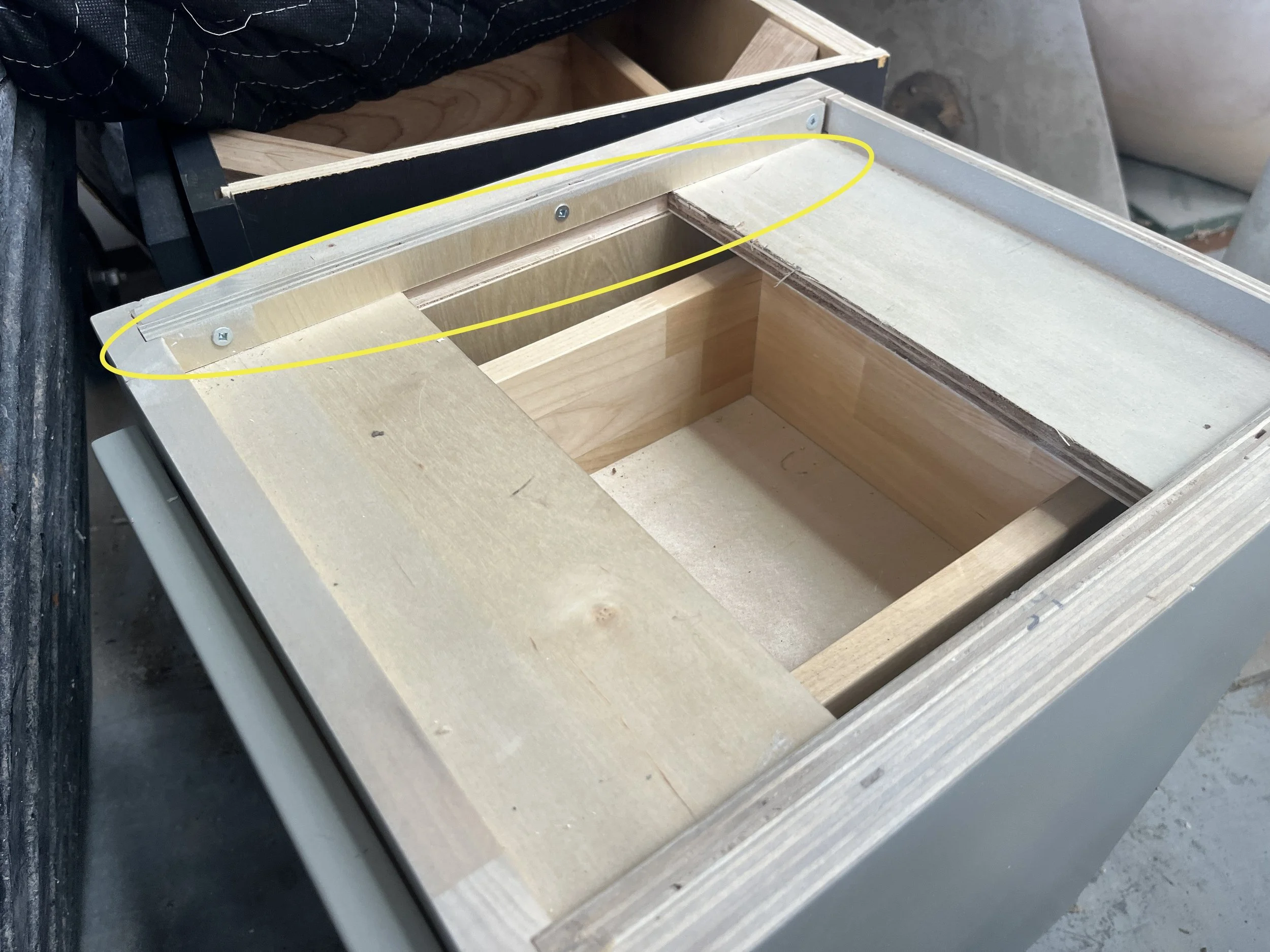What is a dado and why are they important?
Simply put, a dado is way of joining two pieces of wood together by cutting a groove in one piece that the other piece slides snugly into. The benefits are that it increases gluing surface and that it uses the physical material to create holding power rather than placing that burden entirely on the fasteners (nails/screws) or the glue. They can exponentially make a cabinet stronger as they can tie it all together. In the picture below, you will see an example of a dado and the alternative which is called a butt joint: which is when you butt up two pieces of wood with each other.
The shelf that is dadoed in is much stronger. The reason that it is stronger is because the joint is stronger. The material itself didn’t fail on the butt joint necessarily. It was the burden to hold the shelf up that was placed on the nails. That burden was focused on the small area where the nails contact the plywood and caused it to split. It is similar to the experiment you may have tried in elementary school, where the teacher places a single nail on a piece of wood, and a grid of nails on the other piece. You obviously wouldn't stand on the single nail; however you could support your weight on the grid of nails because the burden of holding you up was distributed across a large surface.
When looking for a solid cabinet, having parts dadoed into each other is definitely something that will set it apart from those that aren’t. In the photos below, I’ve used my sample cabinet to show our construction method for out cabinets. You will see dados on most joints.
In the third picture, you see the two dados side by side. You’ll notice that in the dado, the burden of the weight on the shelf is supported by the material on the walls. In the next two videos, I take a hammer to it and show how they hold up to being hit:
The back slides down into that groove so you can never push the back off of the cabinet. In the second picture, I tried to show that the back dadoes into the deck as well.
You will also see above the case is dadoed into the face frame for extra holding power and strength.
Top stretchers slide in that groove to add strength and keep the cabinet square.
In summary, when dados are used, a cabinet can become exponentially stronger than when using butt joints. When you are shopping for cabinets, this is something you want to look for. Most pre fabricated cabinets will be designed with all-dado construction. When shopping for a custom cabinet, you will want to ask about that. With that said, our custom cabinets do come with all-dado construction. We design our cabinets in Cabinet Vision (software) and send it to a CNC router to cut all our parts out. This ensures that all our dados are precise in fitment and placement to build a solid, square, and accurate cabinet.






